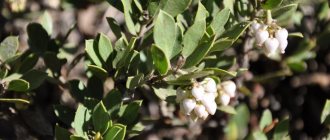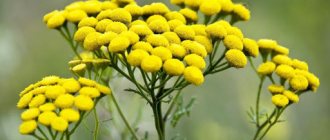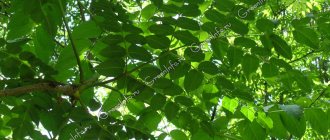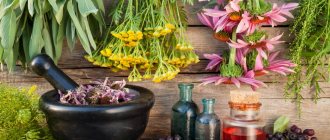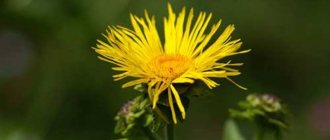Latin name: Origanum vulgare
Oregano is a member of the Oregano genus of the Lamiaceae family. “Oregano” is the most common name for oregano outside Russia. Other popular names: ladanka, motherboard, matryoshka, dushnitsa.
Oregano is an aromatic and slightly bitter herb. This is a sun-loving plant - sunlight helps concentrate essential oils. They give oregano its unique aroma. Oregano itself is not susceptible to any diseases, including pests, and, importantly, it repels insects.
Botanical description
The height of oregano is from 30 to 60 cm. The rhizome is oblique, creeping.
The stems are branched, tetrahedral, with slight pubescence. Over time, mature stems become woody at the base.
Oregano leaves are opposite, petiolate, oblong, pointed. They have a soft, fuzzy structure. Located along the entire length of the tender stems, decreasing in size towards the apex.
The flowers form dense, numerous shields. Corolla pale purple.
The fruit consists of four nuts.
How to choose and how to store?
When collecting raw materials for preparing medicines or dishes, preference should be given to plants with dense stems and bright green leaves. When fresh, oregano retains its taste and benefits for no more than 5 days. For longer storage it must be dried.
It is better to buy oregano seasoning from trusted spice manufacturers. There should be no mold, no signs of discoloration or darkening of the leaves.
At home, the spice should be stored in a dark place in a closed ceramic or glass container with a tight lid (to prevent the essential oils from evaporating).
Chemical composition of oregano
Oregano contains vitamins, minerals, and trace elements.
100 g of herb contains:
| Substances | Contains mg |
| Magnesium | 270.2 mg |
| Sodium | 25 mg |
| Potassium | 1260 mg |
| Calcium | 1597 mg |
| Iron | 36.8 mg |
| Squirrels | 9 g |
| Carbohydrates | 69 g |
| Vitamin A | 1.1 mg |
| Vitamin B6 | 0.9904 mg |
| Vitamin C | 11.71 mg |
| Vitamin K | 622 mcg |
The main components of oregano essential oil are volatile compounds: phenols thymol and carvacrol. Thymol is the main carrier of odor. Oregano contains sesquiterpenes (beta-caryophyllene), monoterpenes, including p-cymene, a strong analgesic.
The chemical composition of oregano is supplemented by flavonoids (apigenin, quercetin, diosmetin), coloring pigment - flavonoid luteolin, caffeic and rosmarinic acids, bitter substances, phytoncides, fiber.
Interesting fact
As you know, methane is 20 times more effective than carbon dioxide in creating the greenhouse effect. And cows produce approximately 5.5 million tons of methane per year. Scientists around the world have been trying to figure out how to reduce methane emissions from livestock. Vaccines and antibiotics did not produce the desired results.
After six years of research, an assistant professor at Penn State found that oregano was the most effective at suppressing methane. The use of the spice even increased milk production.
Medicinal properties of oregano
The leaves and flowering stems, rich in essential oils, have strong antiseptic, antispasmodic, carminative, and choleretic properties. The diaphoretic and expectorant properties of oregano help in the treatment of colds and flu.
Oregano is the most powerful natural antibiotic ever studied. In addition to its fungicidal effect, it has blood thinning properties and can be used to prevent stroke and heart attack.
Oregano lowers blood pressure and pacifies tachycardia, thus protecting both the heart and blood vessels.
Oregano for cough
During laboratory studies, it turned out that even antibiotic-resistant strains of bacteria do not have protection against the active ingredients of oregano. Its essential oil contains two main compounds: thymol and carvacrol. They thin mucus in the lungs and relieve spasms in the bronchi. Thymol is included in some pharmaceutical cough preparations. It is similar in structure to menthol, which is found in peppermint and, like it, relaxes the smooth muscles of the throat and stomach.
For coughs, oregano tea should be consumed sweetened several times a day.
Sore throat
The most common cause of a sore throat is a cold or flu. The first symptoms of a sore throat are only really felt when it is already too late. Inflammation is indicated by an unpleasant sore throat and pain when swallowing. The components of oregano are ideal against sore throats: they kill germs, relieve inflammation and accelerate the healing of a sore throat. It contains beta-caryophylline, a substance that inhibits inflammation. The decoction is used as a gargle for inflammation of the tonsils.
Gynecology
Another name for oregano, mother, justifies its use in gynecology. Motherwort was widely used for women's diseases as a hemostatic agent after childbirth. Oregano is a fairly universal remedy in gynecology:
- it enhances lactation in nursing mothers;
- alleviates the condition of women during menopause;
- an infusion of the herb is used for vaginal douching for genital itching, leucorrhoea, and colpitis.
Oregano oil inhibits the growth of Candida albicans, yeast-like fungi that cause thrush. It contains thymol and carvacrol, which are powerful antifungal agents.
Diseases of the gastrointestinal tract
Thanks to borneol and caffeic acid, oregano stimulates the production of gastric juice, improves digestion, and relieves inflammation of the mucous membrane during gastritis. An upset stomach can be cured by drinking a glass of milk or juice mixed with 2 or 3 drops of oregano oil. The compounds of carvacol and thymol act as antibacterial and antispasmodic agents and stimulate the flow of bile in the gallbladder.
Oregano has a beneficial effect on gastritis with reduced secretory activity, cholecystitis, anorexia, chronic enterocolitis, enhances intestinal motility, prevents nausea and vomiting, and normalizes the process of fat breakdown.
Skin diseases
Skin is an indicator of our internal state. To achieve an effect in the treatment of skin diseases, you need to use oregano preparations not only externally, but also orally to cleanse the virus from the inside and strengthen the immune system. This humble plant can be effectively used to treat and inhibit numerous skin conditions:
- ringworm;
- nail fungus;
- mycosis and eczema - one of the most unpleasant skin diseases.
For nervous disorders
It has been experimentally proven that oregano preparations have a calming effect on the central nervous system. Aqueous infusions of oregano herb are used internally as a sedative for neuroses and insomnia. Research shows that consuming oregano can increase production of the hormone progesterone.
Oregano has been shown to be one of the key herbs that binds to intracellular progesterone receptors and stimulates its release. Progesterone plays a role in several body functions, from maintaining normal sleep patterns to normalizing blood sugar levels and even stimulating the formation of new bone tissue.
Treatment with oregano should be used as an additional remedy, and not as independent therapy for major depression. If you suffer from severe depression, seek help from your doctor.
Prostate
Researchers at Long Island University have discovered that oregano contains an ingredient that can be used to treat prostate cancer, the second leading cause of cancer death in men.
Carvacrol is the same ingredient that causes apoptosis or “suicide” of prostate cancer cells.
Oregano for men may have a side effect in the form of decreased libido.
What does oregano look like?
Oregano reaches 70 centimeters in height. The stem of the plant is straight, thin, and branched. The leaves are green, small, drop-shaped. Inflorescences form towards the top of the stem. Oregano blooms in June-July. The flowers are small, pink-lilac in color, located in the axils of the upper and lateral inflorescences. When oregano blooms, a light, pleasant fragrance spreads around. The plant grows brightly and densely, and it is simply impossible not to notice the soft purple, lush umbrellas against the backdrop of green nature!
Oregano: beneficial properties
The main benefits of oregano are due to the rich composition of this plant.
The foliage, stems and flowers include:
- beta-carotene;
- vitamins of group “B” (“B2”, “B6”, “B9”);
- vitamins “E”, “K”, “PP”, “C”, “A”;
- potassium, magnesium, calcium;
- iodine, sodium, iron;
- folic, rosmarinic acid;
- carvacrol;
- tannins;
- antioxidants;
- essential oils.
Nutritional value per 100 grams of product:
- carbohydrates – up to 85%;
- fats – 5.2%;
- proteins – 10.9%.
The total amount of calories is 265 Kcal.
The plant contains water and dietary fiber.
Oregano, the benefits and harms of which are discussed in this article, is considered a real find not only in culinary achievements, but also in medicine! This plant contains natural components that have a positive effect on the human body.
For example, carvacrol is a natural antibiotic. This substance actively acts on bacterial (pathogenic) flora and prevents its spread. Also, due to the high content of vitamin C (up to 12%), the plant has a pronounced anti-inflammatory effect. Tannins, the share of which is up to 15.8%, promote the healing of wounds and burns, and have a hemostatic effect in case of bleeding. Other components that make up the plant contribute to the formation of a lasting positive effect in the treatment and prevention of diseases.
It is worth highlighting the following beneficial properties of oregano:
:
- thins and gently removes mucus;
- helps remove excess fluid from the body, eliminates swelling;
- forms stable immunity;
- has a carminative effect, removes colic and flatulence;
- soothes the mucous membranes of the stomach, eliminates nausea;
- has a beneficial effect on the intestines;
- normalizes high blood pressure;
- improves metabolic processes in the body;
- improves well-being during colds;
- has a positive effect on the endocrine system;
- increases potency in men and helps enhance female libido;
- has a lactogenic effect on the body of a nursing woman;
- reduces the risk of development and progression of cardiovascular diseases.
Oregano is a healthy product for children! It contains beta-carotene and vitamin A - substances useful for development and growth. Well, since children are the first to fall into the risk zone during the period of active spread of influenza and ARVI, they urgently need this seasoning to protect the growing body from infections and make it stronger and more resilient. Of course, oregano is given only to older children (from three to five years old). Very young children should be given herbal products strictly in consultation with the pediatrician.
Contraindications and possible harm
Oregano is a wonderful herb that saturates our body with useful substances! However, if you have an individual intolerance to the product or due to health conditions, this seasoning may be prohibited for use.
Here is a general list of contraindications:
- allergies to this and other similar products (spices, herbs);
- hypotension;
- stomach ulcer or gastritis during an exacerbation;
- cardiac dysfunction (arrhythmia, etc.);
- some problems with blood vessels;
- pregnancy;
- children up to three years of age.
For any chronic or acute conditions, it is necessary to consult a specialist about the admissibility of using oregano for culinary or medicinal purposes.
The use of oregano in folk medicine
In traditional medicine, aqueous infusion, decoction, tincture and oil of oregano are used for medicinal purposes.
An aqueous infusion of oregano is prepared in a water bath using 2 tbsp. spoons of dried herbs and 200 ml of hot water. Fill the herb with water, close the lid and place the container in a water bath. Warm the infusion for 20 minutes over medium heat. Remove from heat and let sit for an hour.
Take 1/3 cup 3 times a day for stomach discomfort, flatulence, constipation, cough, sore throat.
Oregano tea
If you suffer from insomnia, anxiety, mood swings during menopause, or colds, then brew tea with oregano and drink it warm. Tea acts as a diaphoretic during colds and a sedative for nervous disorders.
1 tbsp. Pour boiling water over a spoonful of herbs, close the lid and wait 10 minutes. Then strain and drink, sweetening if desired. It is better to brew oregano not with boiling water, but with hot water: boil the water and let it cool for a few minutes.
Tincture
Combine 1 part of dry raw materials and 4 parts of 70% alcohol in a container and carefully seal. Place in a dark place for 10 days. After the expiration date, strain the liquid and store in the refrigerator.
Take 5-7 drops 3 times a day for fatigue, cystitis, and colds. The tincture can be added to regular tea.
Alcohol tincture of oregano is contraindicated for people with allergies, stomach ulcers and those prone to depression. In these cases, it is preferable to drink tea or infusion.
Folk recipe for insomnia, neurosis and depression
Tea prepared according to this recipe dispels anxious thoughts, soothes headaches associated with nervous experiences, and gives sound and deep sleep.
- 1 tbsp. spoons of oregano;
- 1 tbsp. spoons of St. John's wort;
- 1 tbsp. valerian;
- 1 tbsp. spoon of honey;
- 1 tbsp. spoons of Bittner's balm;
- 250 ml boiling water.
Brew the herbs with boiling water like tea, add honey, and add a tablespoon of balm if desired. Let it brew for 15 minutes and drink before bed.
Recipe for cleansing the lungs of tar and phlegm
The infusion stimulates the ciliated epithelium in the respiratory tract and cleanses the lungs without an expectorant effect.
- 1 tbsp. spoon of oregano;
- 1 tbsp. a spoonful of tricolor violet;
- 0.5 liters of boiling water.
Brew the herbs with boiling water, leave for 1 hour, covering the container with the infusion with a towel. Take 2-3 times during the day.
Oregano seasoning: application
Oregano is a popular seasoning that is loved and appreciated in many cuisines around the world! Fresh leaves or dried suspension are added to vegetable, cereal, fruit, and berry dishes. Oregano is also used for baking and drinks. This herb is good in pie fillings and sauces. The plant is added to flavor vegetable oils. This is a popular component in pickles and marinades.
To get an idea of this seasoning, let’s characterize the taste and aroma of the herb. Oregano has a distinct peppery flavor. But it is not at all hot or spicy. The “pepper” in these leaves is gentle, pleasant and very noticeable. If you add a sprig of oregano to sunflower oil and leave the product to infuse for eight hours, after this period the oil will acquire a spicy aroma and a subtle “pepperiness”. Oregano seasoning smells fresh. The aroma contains slightly tart notes, similar to the aroma of peppermint.
Oregano in cosmetology
Many people spend a lot of time searching for a miracle cure that will make their skin look great and younger. Although there are many beauty products on the market today, the most effective skin care products can be found in natural herbs. These herbs can reduce the risk of blemishes, reduce wrinkles, hydrate the skin, provide a radiant effect on the skin, and much more.
Oregano decoction can replace many cleansers. The antibacterial nature of the plant will not only combat existing cosmetic problems, but will also prevent new ones from occurring.
Despite the drying effect that oregano has on acne and other rashes, it does not dry out the skin itself. The reason for this is the essential oils that it contains in large quantities. Essential oils are absorbed into the skin through the hair follicle and contain antioxidants that help prevent cellular damage caused by oxidation and protect against the buildup of toxic waste in skin cells, reducing signs of aging.
Decoction for washing
3 tbsp. spoons of dry herbs, pour 1 liter of water and put on fire. Bring to a boil, cook for 5 minutes. Remove from heat and cool. Strain the liquid and refrigerate. Wash your face with this decoction morning and evening. After 2 days, prepare a new decoction.
An excellent skin tonic can be made from frozen decoction cubes. The effect of radiant skin can be achieved by rubbing your face with an ice cube every day. This procedure constricts the blood vessels, which initially reduces blood flow to the skin. To balance this, your body begins to pump more blood to your face, making it look vibrant and radiant.
Oil
To obtain essential oil, the leaves and flowers of oregano are steam distilled at low temperature.
Indications for use
The healing properties of oregano are used to treat gingivitis, tuberculosis, hypertension, as well as:
- Migraine;
- Sore throats;
- Insomnia;
- Pneumonia;
- Atherosclerosis;
- Neurosis;
- Hysteria;
- Bronchitis;
- Menstrual irregularities;
- Epilepsy;
- Bronchial asthma;
- Gastritis.
In folk medicine, decoctions and infusions from the plant are used for menopause, intestinal atony, liver and gall bladder diseases, angina pectoris, diathesis, increased sexual excitability and colds.
Bath mixtures, which include oregano herb, are used for itchy rashes, rickets, abscesses and other skin diseases. Decoctions from the plant are used as a remedy for hair loss and dandruff.
Growing oregano
Growing oregano is not a difficult process, as it does not require special care and grows well both indoors and in the garden; propagated by both seeds and cuttings. Choose a sunny place for it. The best time for planting is spring or early autumn.
Planting oregano begins with growing seedlings in small containers. You need to fill the containers with nutritious soil and moisten them. Make holes in the ground and place oregano seeds in them and sprinkle with soil. Cover the container with plastic. Don't forget to ventilate and moisten the crops.
After germination, the polyethylene can be removed. You need to transplant seedlings into open ground in May, when warm weather sets in. The distance between future bushes should not be less than 20 cm.
Oregano care involves providing adequate light and well-drained soil. It is unpretentious, drought-resistant and does not require feeding.
Oregano is a perennial plant and will produce new shoots every spring. To stimulate this process, prune last year's branches in the spring. Growing oregano will allow you to have your own supply of this medicinal herb.
What can you replace oregano with?
Oregano has a bright and unique aroma and taste that is associated with Italian cuisine. However, oregano has many “relatives” - herbs that have similar qualities.
The closest is marjoram - there are cases when oregano oil is replaced with marjoram, and the difference is almost imperceptible. In the process of cooking, housewives often use a mixture of mint with basil or parsley with dill instead of oregano; thyme and even cumin are also slightly reminiscent of oregano. Just keep in mind that all these herbs do not have healing properties even slightly close to oregano.
Contraindications
Not all natural remedies are safe. Despite all the benefits, oregano also has contraindications. Side effects of oregano may occur in combination with certain medications.
- As a plant with a strong odor, oregano can cause allergies. Avoid if you have allergies or individual intolerances.
- Oregano is not recommended during pregnancy due to its abortifacient properties, which can cause uterine contractions.
- Do not take it with blood thinners.
- Contraindications for oregano also apply to patients with diabetes. It is incompatible with antidiabetic drugs due to its ability to lower blood sugar.
- If you have hypotension, it is better to refrain from consuming this plant, as oregano reduces blood pressure.
What effect does oregano have?
Oregano herb stimulates the secretory functions of organs. It enhances the secretion of saliva, gastric juice and bile, improving the processes of assimilation and digestion of food. It also increases the secretion of mucus, especially on the mucous membranes of the upper respiratory tract, and regulates the function of the sweat glands and kidneys, gently increasing the amount of urine produced. Due to the content of flavonoids, this plant has a diastolic effect on:
- smooth muscles of the bronchi,
- intestinal smooth muscles,
- bile ducts,
- ureters,
- uterus during monthly bleeding.
The presence of tannins and phenols makes oregano:
- has antidiarrheal properties,
- has antibacterial properties,
- binds harmful metabolic products.
Collection and preparation
The ideal time to collect oregano is when flower buds are forming. It is at this time, before the flowers bloom, that the amount of nutrients in it reaches its peak. You need to collect it in the morning, after the dew has disappeared. Cut off the tender branches with scissors, or run your fingers along the stem - the leaves will appear in your palm.
Oregano root is not used for medicinal purposes. You need to dry it in the shade or in a ventilated area, hanging the oregano in the form of small bouquets.
Oregano: beneficial properties and contraindications
To understand how beneficial oregano seasoning is, you should first understand what this plant is. Let's turn to the botanical description and consider the composition.
Oregano
– origanum vulgare (lat.), or common oregano. The plant belongs to the Lamiaceae family. This is a perennial crop that grows in many regions of our country and in the vastness of European countries (Spain, Italy, France and others), as well as in the USA. The plant is unpretentious and easily takes root in areas with a favorable (warm) climate and suitable soils. Since the taste, aroma and beneficial properties of oregano have gained approval in the field of cooking and traditional, official medicine, the crop began to be purposefully grown. Oregano is cultivated mainly in European countries and America. In Russia, oregano can be found in forests and meadows located near water bodies. In our country, this plant can be found everywhere except in the northern regions. Many people grow oregano in their own garden beds.
The benefits and harms of the plant for women
Let's figure out why this herb, with all its universal properties, is considered feminine. It received the affectionate name “motherboard” for its widespread use in gynecology and care for our health. Its phytoestrogens help regulate the menstrual cycle and compensate for the lack of hormones that inevitably occurs during menopause.
After childbirth, a decoction of mother’s milk stimulates lactation, promotes contraction of the smooth muscles of the uterus and speedy recovery of the body as a whole. But during the period of bearing a child, its use is strictly prohibited due to the increased risk of miscarriage or premature birth.
External use in the form of douching gives a good effect in the treatment of cervical erosion, inflammation and irritation of the vaginal mucosa.
The decoction is also used for cosmetic purposes as a vitamin hair rinse, giving it strength and shine, or as a facial tonic with an anti-inflammatory, refreshing effect.
